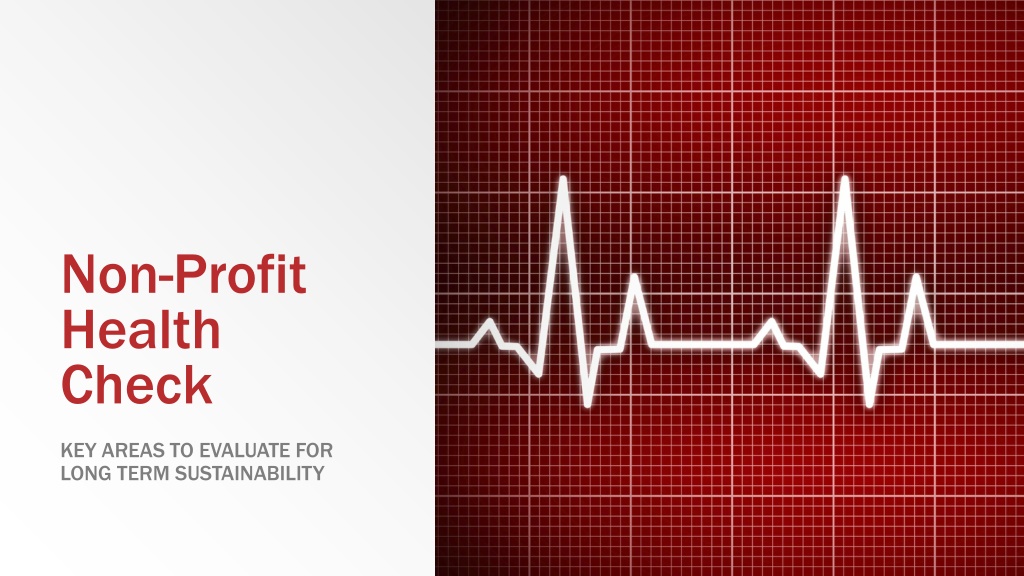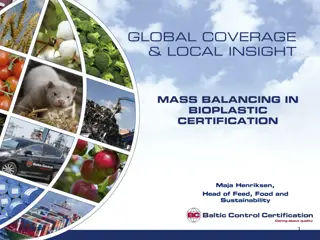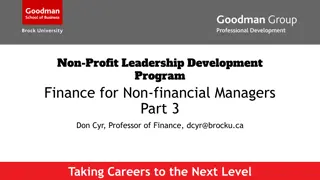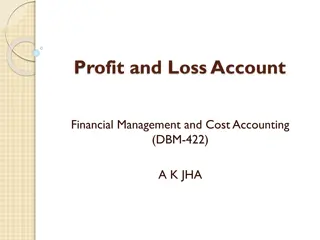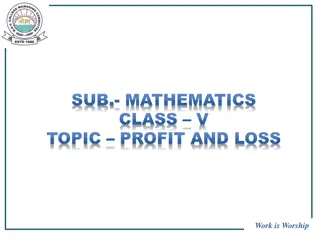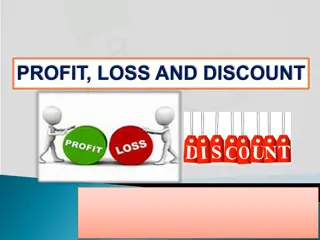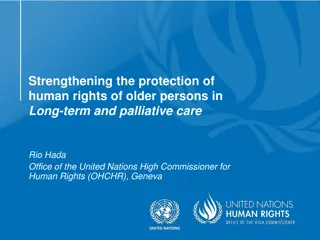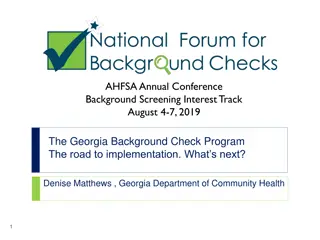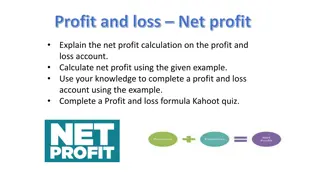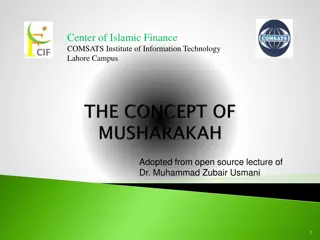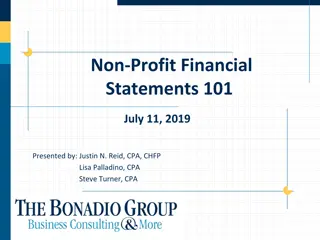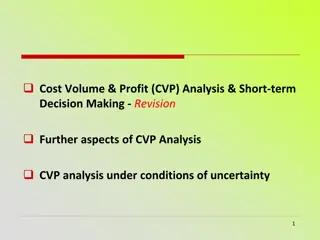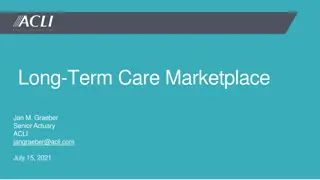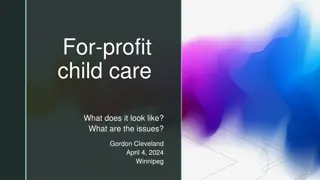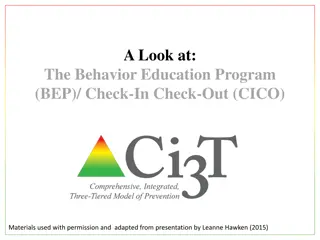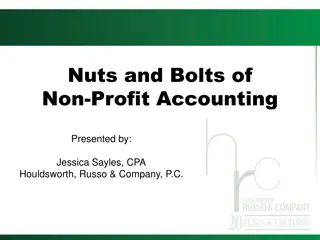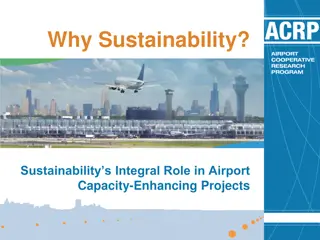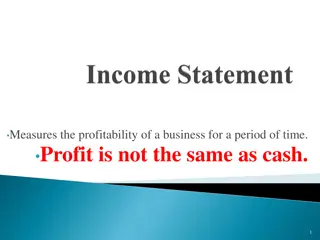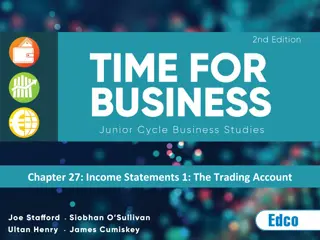Non-Profit Health Check: Key Areas for Long-Term Sustainability
Explore essential aspects for ensuring the long-term sustainability of non-profit organizations, including financial viability, organizational assessment, governance health, and business model mapping. Gain insights from the experiences of renowned museums and botanical gardens on strategic decision-making and adapting to changing environments.
Download Presentation

Please find below an Image/Link to download the presentation.
The content on the website is provided AS IS for your information and personal use only. It may not be sold, licensed, or shared on other websites without obtaining consent from the author. Download presentation by click this link. If you encounter any issues during the download, it is possible that the publisher has removed the file from their server.
E N D
Presentation Transcript
Non-Profit Health Check KEY AREAS TO EVALUATE FOR LONG TERM SUSTAINABILITY
Agenda and Goals Facilitator Introductions Todd Smith and Suzanne Maas Goal of this session - Long-term Sustainability What is it? Lessons learned from American Textile History Museum Lessons learned from Higgins Armory Museum and Tower Hill Botanical Gardens Q&A breakout 30 minutes
Facilitator Introductions Todd Smith Strategic consultant Interim Executive Director of American Textile History Museum Assessment, governance & leadership, financial viability, new models Suzanne Maas, Leadership Transitions Transition consultant and interim leadership Interim Executive Director of Higgins Armory Museum Assessment, decision making, new business model, integration Interim Executive Director of Tower Hill Botanic Garden Assessment, culture & governance changes, new business model
Sustainability What is it? Encompasses both financial sustainability & programmatic sustainability Ability to generate resources to meet needs of the present without compromising the future Ability to develop, mature, and cycle out programs based on constituent needs over time Sustainability is a direction and an orientation, not a destination. Requires continuous decision making that reflects the dynamic environment in which nonprofits exist. Bell, Masaoka, Zimmerman, Nonprofit Sustainability: Making Strategic Decisions for Financial Viability, Jossey-Bass, San Francisco, 2010.
Tasks to evaluate sustainability Organizational Assessment Performed by External consultant or volunteer Financial viability length of runway Governance health Systems analysis Capacity assessment Organization culture Mapping your Business Model Performed by Internal Staff/Board Identify core business lines Identify mission and financial impact for each business line Make Changes based on informed decision-making
Lessons Learned from American Textile History Museum
Key Points ATHM 2015 Focus on Budget Challenges the Ostrich Effect Avoid Mission Creep Evaluate the Collections Policy & Its Integration into Governance
Budget Challenges and the Ostrich Effect Budget Issues Do NOT NOT Resolve on their Own Boards Must Ask the Difficult Questions Balance the Budget Sustainable Revenue is Key
Avoid Mission Creep Mission Focus Fundamental to Museum Success Boards Must Focus on Mission Business Lines/Programs Must Fit Mission Donations Must Fit the Mission
Evaluate to the Collections Policy Where is Your Collections Policy? Revisit Collections Policy Every Year Collections Policy Identifies the CORE CORE Collection Deaccession Regularly to Refine the Collection
Lessons Learned from Higgins Armory Museum
Higgins 2010 Interim management enters at a time of executive turnover Organization assessment and financial forensics Presents report on financial position to Trustees Decision - set course for Turnaround
Characteristics of a Nonprofit Requiring a Turnaround Obsolete mission Extremely weak financial position Severe problems with the business model itself or its execution Serious problems with people and communications One of these indicates a serious problem; 2 or more signify crisis One of these indicates a serious problem; 2 or more signify crisis Glick, Jan, Nonprofit Turnaround: A Guide for Nonprofit Leaders, Consultants and Funders, 2010.
Steps in a Turnaround Sense of Urgency Board acts Diagnosis Triage Improve Culture and Communication Assemble a Turnaround Leadership Team Fixing the Business Model Planning and Execution New Revenues for Long Term Health
Leadership Practices & Decision Making Leadership sets new tone Model Openness and Transparency Implement Performance Management Build Leadership Team Listen Build Buy-in Establish decision making protocols Many decisions, little time
Diagnosis Process Working Towards Success Solid Situation Assessment Solid Situation Assessment: : Individual interviews with board and staff required; assess culture and communications. Accurate Financial Accurate Financial Assessment: necessary to determine financial position and strength of the organization and each department/program. Assessment: Use whatever means
Diagnosis Process (contd) Key Steps in Diagnosis Process: Key Steps in Diagnosis Process: Financial data must be presented for strategic decision making. Interim ED and consultants: Complete enough of assessment in 30 days to allow initial triage steps to begin. (Permanent executive directors may take somewhat longer.) Assessment builds buy-in from board and staff, brings in new thinking and perspectives from stakeholders, builds teamwork and a culture of reflection, and dictates what is needed to assemble a turnaround leadership team. Assess organizational culture from outset, model open, honest and regular communications with board and staff.
Initial Triage Steps Once far enough along in assessment, (30 days +/ Once far enough along in assessment, (30 days +/- -), ), make make initial initial triage steps triage steps: Re-examine the mission and museum s focus on mission; Identify key business lines and assess for mission and financial impact; Make changes in positioning and/or branding; Start to divest or scale back ineffective programs Deaccession responsibly; Fix internal systems; and Terminate any ineffective employees.
Improve Culture & Communications Most significant problem in virtually all crises/turnarounds Strive to establish new culture, based on: Performance management Open, transparent, frequent communications Teamwork
Address Cultural Obstacles Ineffective mindsets & sacred cows Ineffective mindsets & sacred cows: can t make a profit, can t spend on capacity building, all decisions must be consensus; Organizational, board/staff conflicts Organizational, board/staff conflicts -- issues have been personalized; Staff emotionality Staff emotionality regarding rapid assessment and change especially when programs are cut or changed & if staff turns over.
Endgames Successful Turnaround (min. 5 years) Merger, Integration or Acquisition Inconclusive Outcome to Turnaround (which leads to ) Closure
Q&A Breakout 30 minutes 2 Breakout Groups Pick the Topics Assessment indicating unsustainable business model - 3 year runway Assessment indicating turnaround is possible or underway transition to sustainable business model Backing a turnaround funding support and organizational challenges Merger, Acquisition, or Integration what to consider and who to reach out to Provide opportunity for more detailed questions and answers based on experiences at three MA museums
Bibliography Glick, Jan, Nonprofit Turnaround: A Guide for Nonprofit Leaders, Consultants and Funders, 2010. La Piana, David, Nonprofit Mergers Workbook: A Leaders Guide to Considering, Negotiating, and Executing a Merger, Amherst Wilder Foundation, 2000. Bell, Jeanne; Masaoka, Jan & Zimmerman, Steve, Nonprofit Sustainability: Making Strategic Decisions for Financial Viability, Jossey-Bass, San Francisco, 2010.
